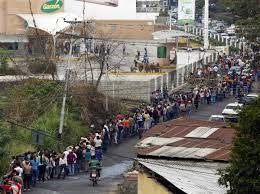

This Pattern Looks Familiar…
If the chart for the Venezuelan bolivar looks eerily familiar, it may be because its trajectory thus far is almost identical to that of the Papiermark during hyperinflation in the Weimar Republic from 1918-1923.
Although the Papiermark would eventually peak at an inflation rate of 3.5 billion percent in 1923, the pace of inflation started relatively modestly. It started in the double-digits after the war in 1918.
This is similar to today’s bolivar. In 2013 and 2014, the pace of inflation in Venezuela was increasing, but still confined to double-digits. Now things are accelerating fast, and if the IMF is correct with its predictions, there could be huge consequences.
Could Venezuelan hyperinflation ever hit the peak levels associated with Weimar Germany? It’s hard to say, but it’s not impossible.
A More Tangible Example
To put things from a more tangible perspective, let’s do the math based on IMF projections to see what may be in store for ordinary Venezuelans.
- In 2012, one U.S. dollar could buy approximately four bolivars.
- At the end of 2015, one U.S. dollar could buy 900 bolivars at the black market rate.
- Based on IMF projected inflation rates, by the end of 2017, one U.S. dollar should be able to buy 90,000 bolivars.
Where things go after that is anybody’s guess.